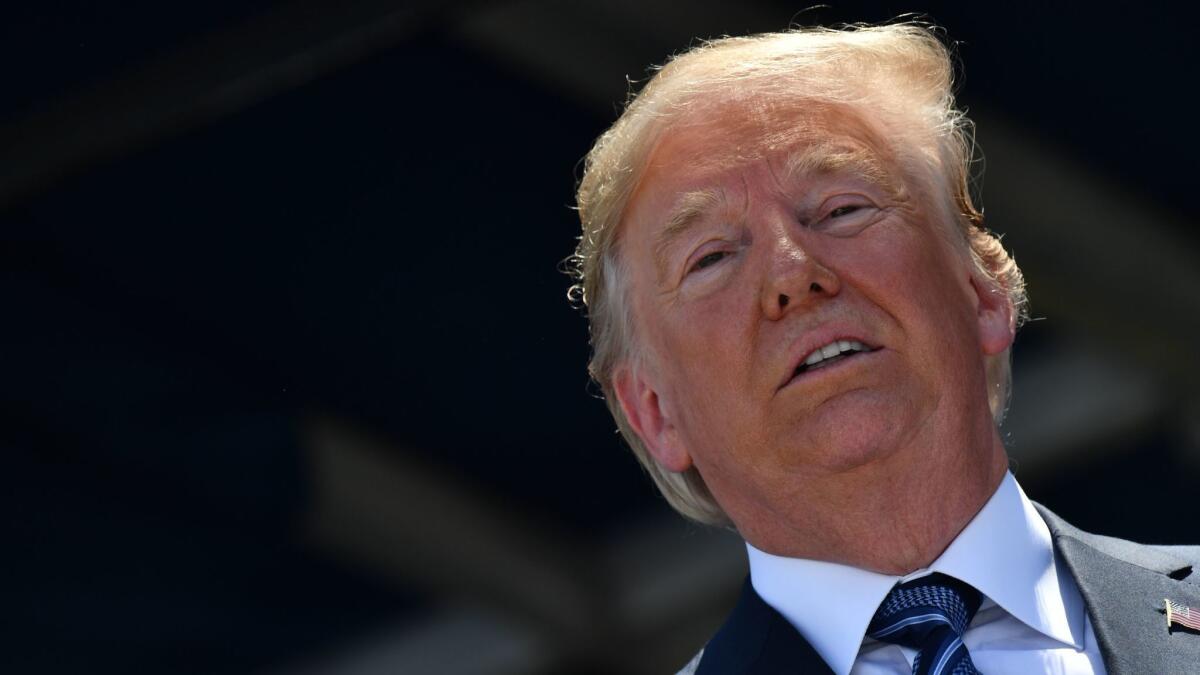Trump signs executive orders cracking down on federal unions representing about 2.1 million employees

- Share via
President Trump has signed executive orders restricting the unions that represent many of the government’s 2.1 million employees, the White House said.
One of the three orders limits the amount of official time federal employees can spend on union duties to 25%. It also requires the federal government to start charging union members rent for using space in federal buildings, stop paying employees for the cost of lobbying the federal government, and more aggressively negotiate union contracts.
Trump’s move to curtail the activities of federal unions follows a wave of laws signed by Republican governors over the last decade restricting public-sector collective bargaining and weakening government unions, moves that conservatives see as helpful in shrinking government and undermining political foes.
The American Federation of Government Employees, the nation’s largest federal employee union, endorsed Democrat Hillary Clinton for president in December 2015.
“This is more than union-busting — it’s democracy-busting,” the union’s president, J. David Cox, said in a statement. “These executive orders are a direct assault on the legal rights and protections that Congress has specifically guaranteed to the 2 million public-sector employees across the country who work for the federal government.”
Since entering office, Trump has made high-profile overtures to private-sector union leaders and members, but has shown less interest in winning over their public-sector counterparts. One notable exception is the union representing Immigration and Customs Enforcement staff members.
Among Trump’s most consequential moves for the future of organized labor was his appointment of Supreme Court Justice Neil M. Gorsuch, who is expected to vote with the court’s conservative majority to ban public-sector union fees, making the entire public sector “right-to-work.” That ruling will be announced next month.
Another of the executive orders Trump signed instructs the Office of Personnel Management to update regulations to shrink the length of performance improvement periods, during which a problem worker cannot be fired, to 30 days across all agencies. Such periods, which allow workers an opportunity to improve their performance and keep their jobs, currently last from 60 to 120 days, according to a senior administration official who briefed reporters before Friday’s announcement.
“These executive orders will make it easier for agencies to remove poor-performing employees, and ensure that taxpayer dollars are more efficiently used,” White House Domestic Policy Council Director Andrew Bremberg told reporters on a conference call.
During his State of the Union address in January, Trump called on Congress to pass legislation that would give the executive branch more authority to quickly remove workers. No such legislation has been passed, and a senior administration official said that the president signed the orders in part to achieve a similar aim.
More to Read
Sign up for Essential California
The most important California stories and recommendations in your inbox every morning.
You may occasionally receive promotional content from the Los Angeles Times.










